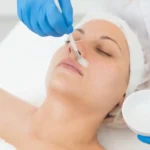THE WHAT? Shiseido has reported a Q3 net sales rise of 13 percent, with global growth driven by Americas, EMEA and travel retail offsetting challenges in Japan and China.
THE DETAILS Operating profit was up ¥17.3 bn YOY to ¥26.3 bn, with the Japanese beauty giant having been speeding up investments in line with market recovery, while ‘solidifying foundation for profit through cost management and fixed cost reductions.’
There was continued growth in e-commerce, mainly in prestige, while skin beauty brands drove growth and were up 11 percent YOY.
Travel retail was up 24 percent versus 2020.
THE WHY? Shiseido’s boost in travel retail and other geographical areas have offset the ‘depressed’ market of Japan, which is said to be affected by COVID-19 various and an ‘extended state of emergency.’
The company said, “The overall recovery is behind expectations, albeit bottomed out in August. Skincare growth decelerated; base and color make-up shrinking.”
Shiseido has revised its FY outlook to net sales down 2 percent vs the previous outlook, operating profit up 19 percent and like-for-like net profit, excluding structural reform expenses, +¥11.0 bn.
Aesthetic medicine products are developed and regulated to meet stringent safety and efficacy standards. They are typically administered by trained healthcare professionals such as dermatologists, plastic surgeons, and specialized nurses in clinical settings. These products aim to provide effective solutions for cosmetic enhancement, skin rejuvenation, and overall aesthetic improvement, contributing to both physical appearance and self-confidence.
Key categories of aesthetic medicine products include:
-
Injectables: This category includes products such as dermal fillers, botulinum toxins (e.g., Botox), and collagen stimulators. These injectables are used to smooth wrinkles, add volume, and improve facial contours.
-
Skin Rejuvenation Treatments: Products like chemical peels, microdermabrasion systems, and laser devices are used to improve skin texture, reduce pigmentation irregularities, and enhance overall skin tone.
-
Skincare Products: These include medical-grade cleansers, moisturizers, serums, and topical treatments containing active ingredients like retinoids, antioxidants, and growth factors. They are formulated to address specific skin concerns such as acne, aging, and hyperpigmentation.
-
Hair Restoration Products: Medical treatments and products designed to promote hair growth and treat conditions such as male and female pattern baldness.
-
Body Contouring and Fat Reduction: Devices and products used for non-surgical body sculpting, such as cryolipolysis (cool sculpting) devices and injectable lipolytics.
-
Cosmeceuticals: High-performance skincare products that bridge the gap between cosmetics and pharmaceuticals, often containing potent ingredients with proven clinical benefits.
-
Wound Care and Scar Management: Products like silicone sheets, gels, and advanced wound dressings used to improve healing and reduce the appearance of scars.





